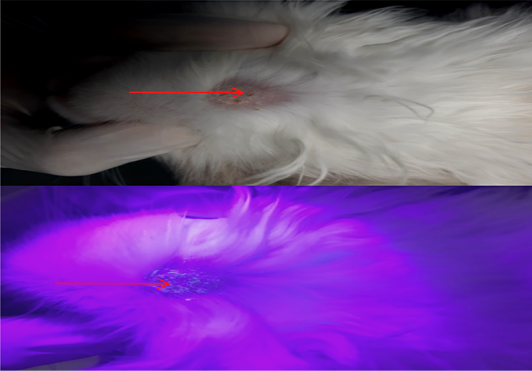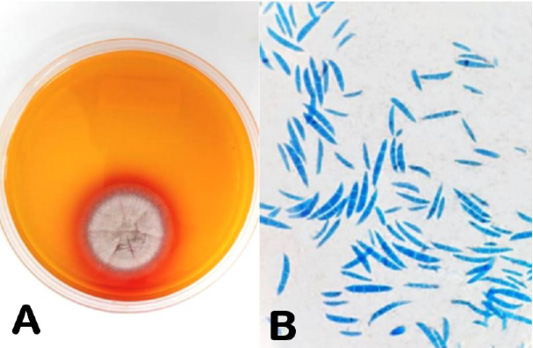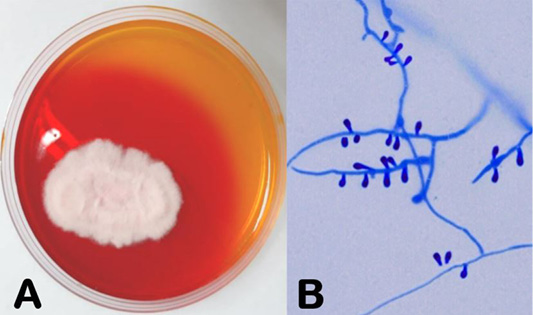Dermatophytosis in Cats: Clinical Signs and Identification of Etiological Agent
Alsi Dara Paryuni1, Soedarmanto Indarjulianto1, Tri Untari2, Sitarina Widyarini3*
1Department of Internal Medicine, Faculty of Veterinary Medicine, Universitas Gadjah Mada, 55281, Yogyakarta, Indonesia; 2Department of Microbiology, Faculty of Veterinary Medicine, Universitas Gadjah Mada, 55281, Yogyakarta, Indonesia; 3Department of Pathology, Faculty of Veterinary Medicine, Universitas Gadjah Mada, 55281, Yogyakarta, Indonesia.
*Correspondence | Sitarina Widyarini, Department of Pathology, Faculty of Veterinary Medicine, Universitas Gadjah Mada, 55281, Yogyakarta, Indonesia; Email: sitarina.widyarini@gmail.com
Figure 1:
Lesions from dermatophyte infection in body part of cat with crust and alopecia in the skin (red arrow); Skin lesions of cat with fluorescence (apple blue-green color) under Wood’s lamp examination (red arrow).
Figure 2:
Fungal colony of M. canis in DTM (A); M. canis macroconidia (B).
Figure 3:
Fungal colony of T. mentagrophytes in DTM (A); T. mentagrophytes microconidia (B).









